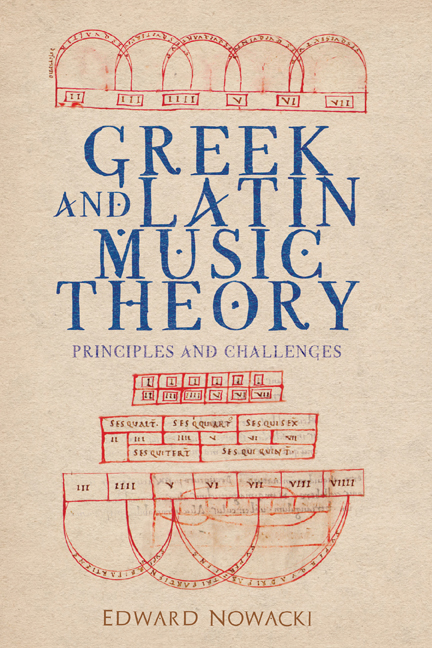12 - Reading the First Quidam of the Alia musica
Published online by Cambridge University Press: 14 August 2020
Summary
Reading the Alia musica can be like reading Lewis Carroll. Its dizzying prose is likely to overwhelm novices and to challenge even experienced readers. Yet some of the difficulties are caused by assumptions—obscure to us but not to the work's original readers—that illuminate the text when they are taken into account. One of the most important is the author's practice of stating ratios as sums. The perfect fourth, for example, commonly understood as the difference between an unstopped string and the same string stopped at three-quarters of its length, is ordinarily described with the mathematical ratio of 4:3 and the fractions and. But in the Alia musica it is described instead with the number 7, that is, 4 plus 3. The reason is that the components are displayed not consecutively, but simultaneously, by combining them end to end. For a string to exhibit the ratio of 4:3, it is divided into seven equal parts with the bridge placed between the fourth and fifth part. The components of the perfect fourth can then be demonstrated without moving the bridge by simply sounding the two parts of the divided string. It should be no surprise that the Alia musica adopts this method of measurement, since it is the one described in book 4, chapter 18, of Boethius's De institutione musica.
Another difficulty arises from the practice of expressing ratios in multiples of their least proportional terms. The perfect fifth, for example, is sometimes described with the number 20, that is, the sum of 12 and 8, representing the ratio of 3:2 in quadruplicate. The reason, evidently, is operational. Having once divided the ruler into 18 parts in order to demonstrate the ratio of 12:6 (2:1) for the octave, the mathematician found it convenient to keep one of the terms constant and to add to the other term in order to obtain the ratio of 12:8 (3:2) for the fifth and 12:9 (4:3) for the fourth. Sometimes different multiples are used, but their purpose is often the same: to facilitate the comparison of ratios by adding units to one of the terms while keeping the other term constant.
- Type
- Chapter
- Information
- Greek and Latin Music TheoryPrinciples and Challenges, pp. 111 - 130Publisher: Boydell & BrewerPrint publication year: 2020

